How to prepare a bird for show.
Planning to enter a poultry show required years breeding stock management and selecting the best specimens for showing, even down to timing the hatches so the birds are at their peak for any given show.
Table of Contents
Preparation for a particular poultry show starts at least three months before the event.
Timing is critical and having your show stock ready at the time of the show takes careful planning. You would not want your chickens to start moulting a few days before the event.
Below: A properly prepared show bird is a sight to behold.
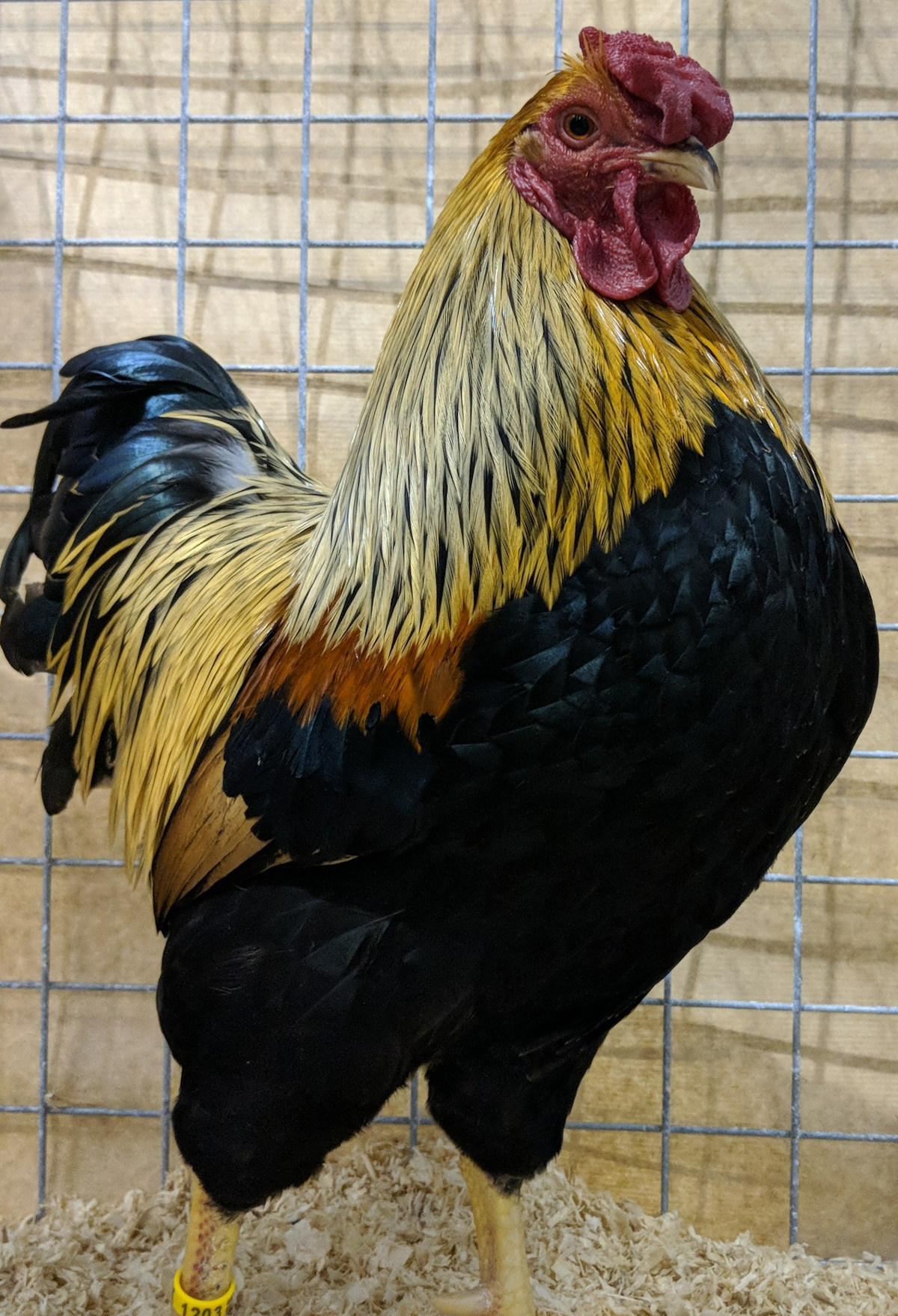
Some breeders will even force moult their hens early in the year or keep them under short light conditions of less than 10 hours a day to make sure they are not into lay and can be presented in their best condition.
Preparation for a poultry show :
- Know your judges. They are selected a year or more in advance and are either poultry club qualified or an long standing expert in their breed.
- Get to know the breed standards by heart.
- Birds for showing will need a special diet, supplements and treatment.
- Birds need to be in good feather and clean when one exhibits. Clean also includes that the birds should be free of lice and mites.
- Enter more than 1 bird in the class. The more you enter the faster you will learn what type is required.
- Do the paperwork, fill in the forms and pay the entrance fee if there is one.
Pluck broken or damaged feathers 12 weeks before the show to allow time for them to grow back. - Bring the birds indoors, you will not be able to prepare a free range chicken for a poultry show. Rain and direct sun will bleach colour and pattern from the feathers.
- Separate the males from the females. The last thing you need is spurs damaging the hens feathers of fighting among the boys.
- Begin cage training and handling and get the birds used to being around people and noise.
- Beak shaping and claw trimming is best done in small stages and a little at a time and make sure any cuts are "polished" with a file or emery board.
- Clean the legs and toes and oil lightly. They will stay clean and supple and be easier to manage.
The first thing I do is select my best typed and conditioned birds that we feel will do well in a show.
As the old saying goes, you can not polish a turd an no amount of preparation will make a poor typed or conditioned bird any better than what it is. You are just putting lipstick on the pig!
Preparation and fitting will, however, improve a good bird’s chances of winning.
How do I prepare for a poultry show?
Washing or cleaning the bird is the first step and generally only white birds require a bath, other colours can be spot cleaned with time. The best way to clean a bird is to not let it get real dirty in the first place.
Manure stains can be hard to remove so keep cages clean.
Keep roosters away from hens during the show prep.
Below: Cage training is important. Chickens, like this one, need to be happy and relaxed in cages and being handled.
There will also be hundreds to thousands of other chickens cackling and crowing and birds need to remain calm.
Washing chickens for show:
I start with 3 X 5 gallon tub trugs about three quarters full of water at approximately 98 F in temperature. Too hot or too cold may cause the birds to struggle or panic and could even kill them.
I wash the birds in the shed, I have an electric water heater that we use to get the wash water to the right temp. Once the water is right, we put two cupfuls of Hartz Mountain White Dog Shampoo in the first bucket and make lather with it.
Below: Washing a Silkie.
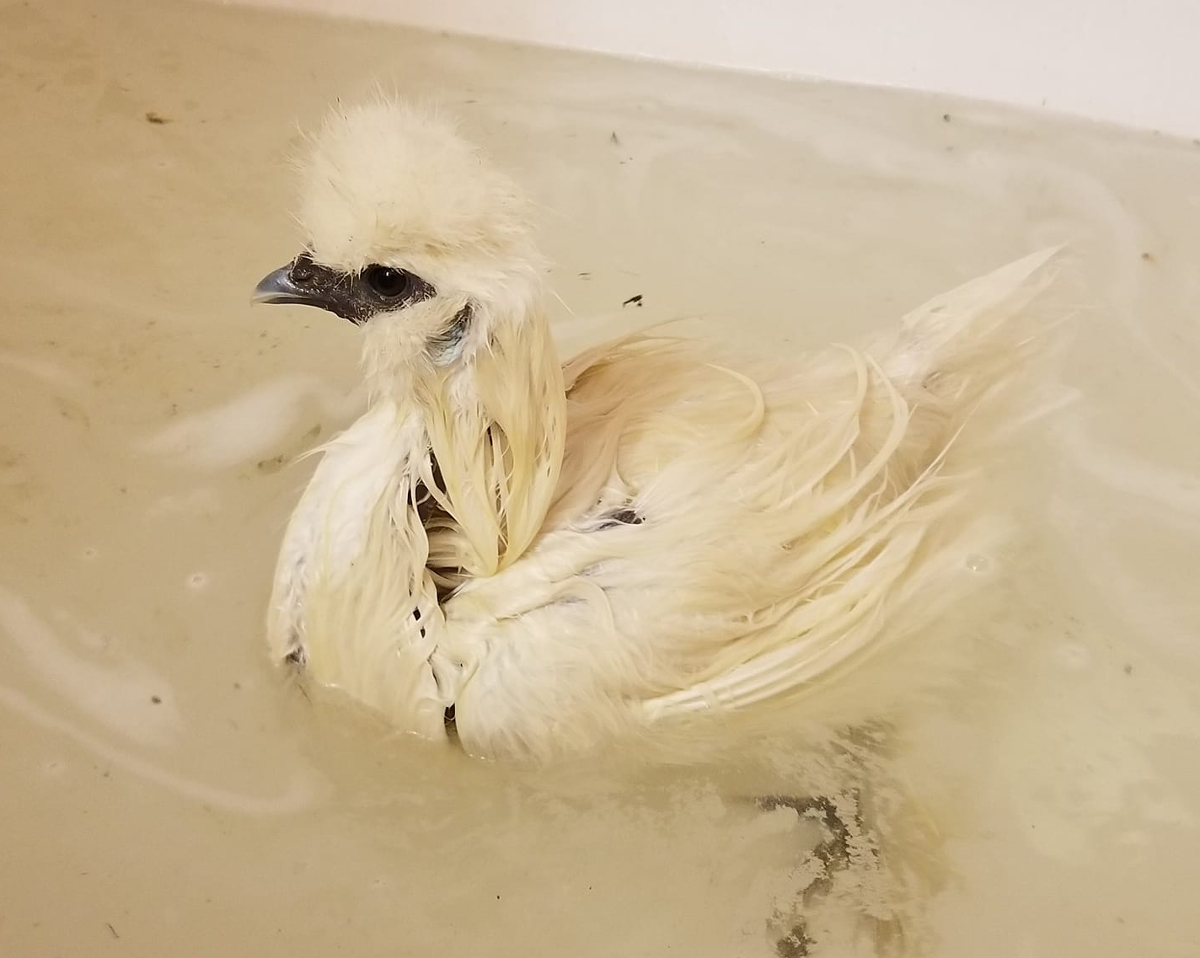
The second bucket has plain warm water with 2 oz of Glycerine in it to put the oil back in the feathers. The last bucket has plain warm water.
Firstly I dip the bird clear up to its neck in the water and thoroughly soak the bird. The head and comb area is scrubbed with the soapy water with a toothbrush. If the plumage is real dirty, work a few drops of shampoo into the feathers. Then use a soft bristled vegetable to scrub the bird, working with the lay of the feathers.
Once the plumage has been wash and scrubbed, use the toothbrush to clean the legs and feet getting all the dirt beneath the leg scales. This also is a good time to check the bird for stubs between the toes.
Below: Wrapping the bird in an absorbent towel.
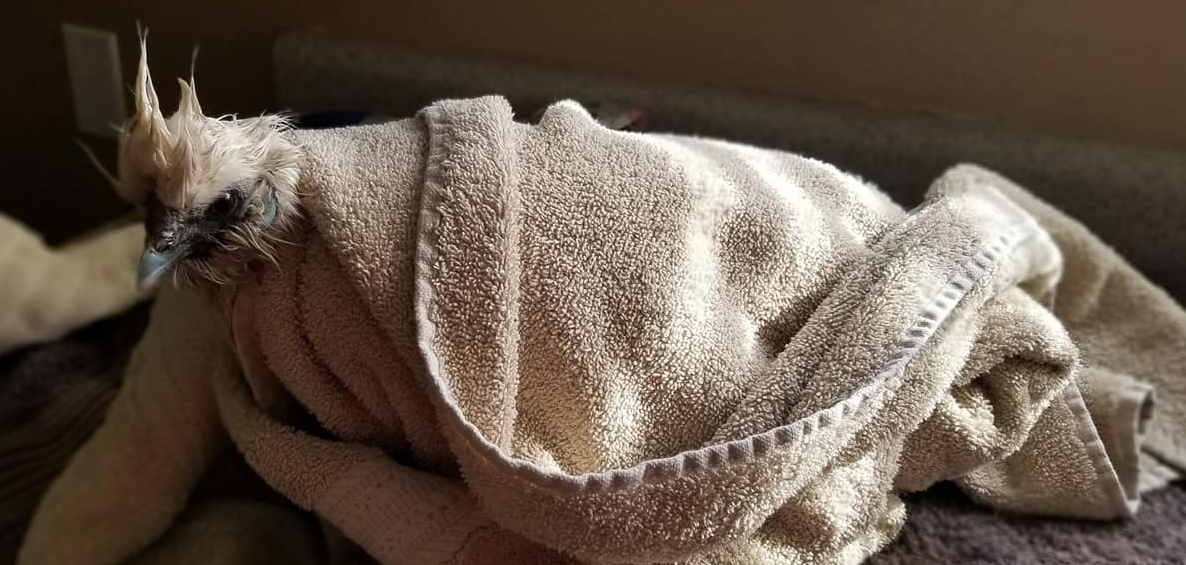
Once the bird has been washed, dunk several times in the second bucket to get all the suds out of the bird. Squeegee the water off the bird, making sure most of the suds are gone. Now, rinse the bird in the final bucket several times until squeaky clean.
Change the waters regularly.
Wrap the bird in a terry cloth towel to pat dry. I like to use a fan heater in drying cages or 150 watt heat lamps and let the birds dry naturally.
Blow drying can curl and damage feathers and the only chickens I use a blow dryer on are Silkies. Silkies and white birds are washed about 2-3 days before the show.
Coloured birds are spot washed about 6-7 days before the show in order to let their feathers get back in to natural shape.
The night before the show:
Washed birds are kept in show cages with heavy, clean pine shavings and the poop is scooped out daily to keep them clean.
Below: Custom designed and built individual wooden transport cages for show chickens.
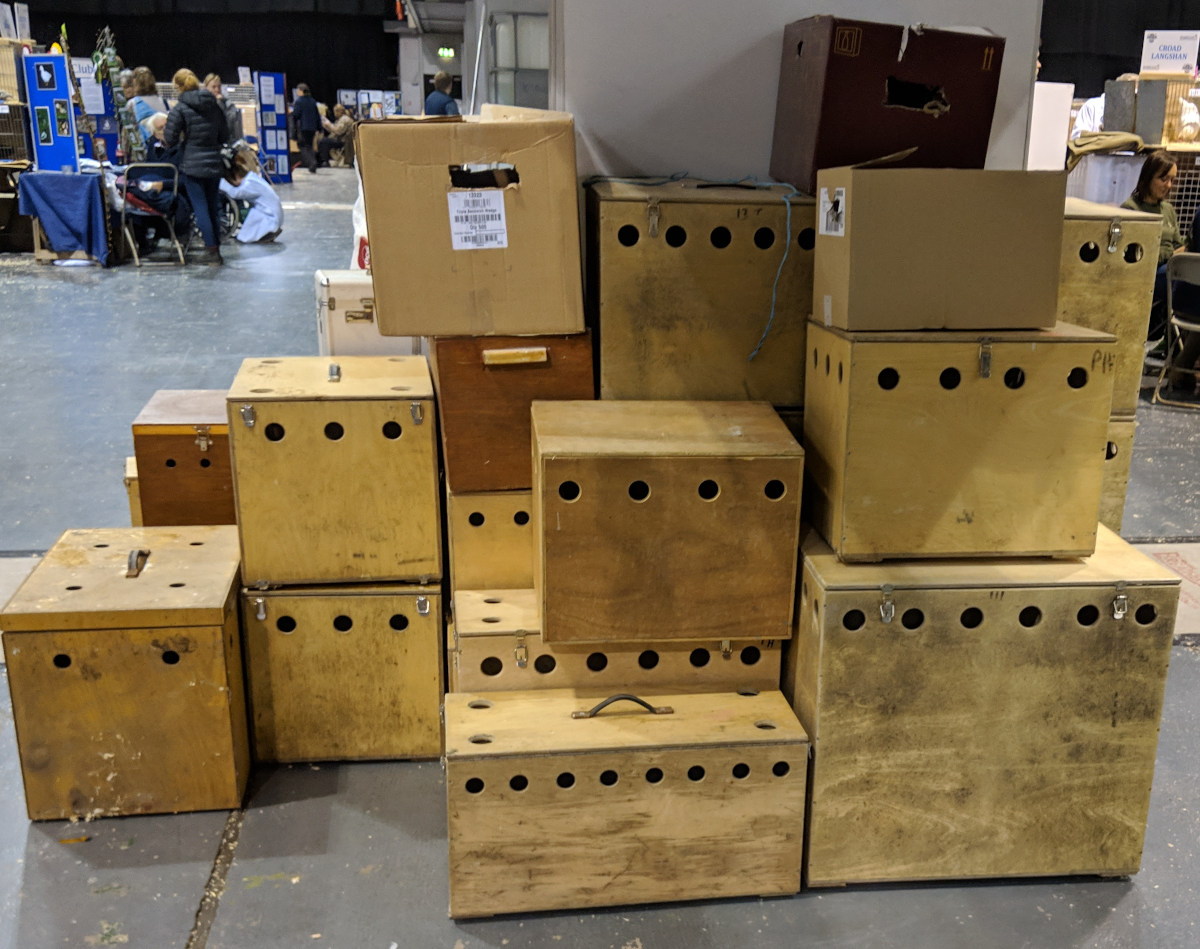
Withhold feed and water the night before the show and make sure the transport coops have plenty of clean, dry shaving in them so they don’t soil themselves in transport to the show.
At the show:
I check beaks and toenails to see if they need trimming or shaped up. If they do, we use nail clippers and emery boards to do this.
If they are soiled spots on the birds, Baby wipes are used to touch up the birds and clean the feet if soiled. For the comb and head area, we rub a light coat of VetRX or a 50/50 mixture of baby oil or castor oil with Spirits of Camphor.
Below: The final prep before caging.
I add a spot of lanolin on the legs of the clean legged breeds and rub it in properly, it makes the legs shine without shavings sticking to them.
For the finish on the feathers, I get a clean cotton glove and spay it with TCB Naturals, a hair care product, and rub the bird with the feathers. This product will put an amazing shine on all birds.
Now we have the bird all clean, we make sure all feathers are in place and add some extra clean shavings to the show coop. Withhold feed and water till after the bird is judged.
Sometimes if the bird appears a bit restful or lazy, a sprinkle of scratch feed in the cage prior to judging will make the bird more active.
After the show:
Make sure you ask any questions of the judges and other exhibitors and pickup you birds and head for home.
Handling other people chickens at the show is a no-no with out permission and make sure you get the right birds to take home with you.
Quarantine you birds when getting back from a poultry show. 21 days should be long enough to make sure they have no gotten sick or picked up and parasites.
